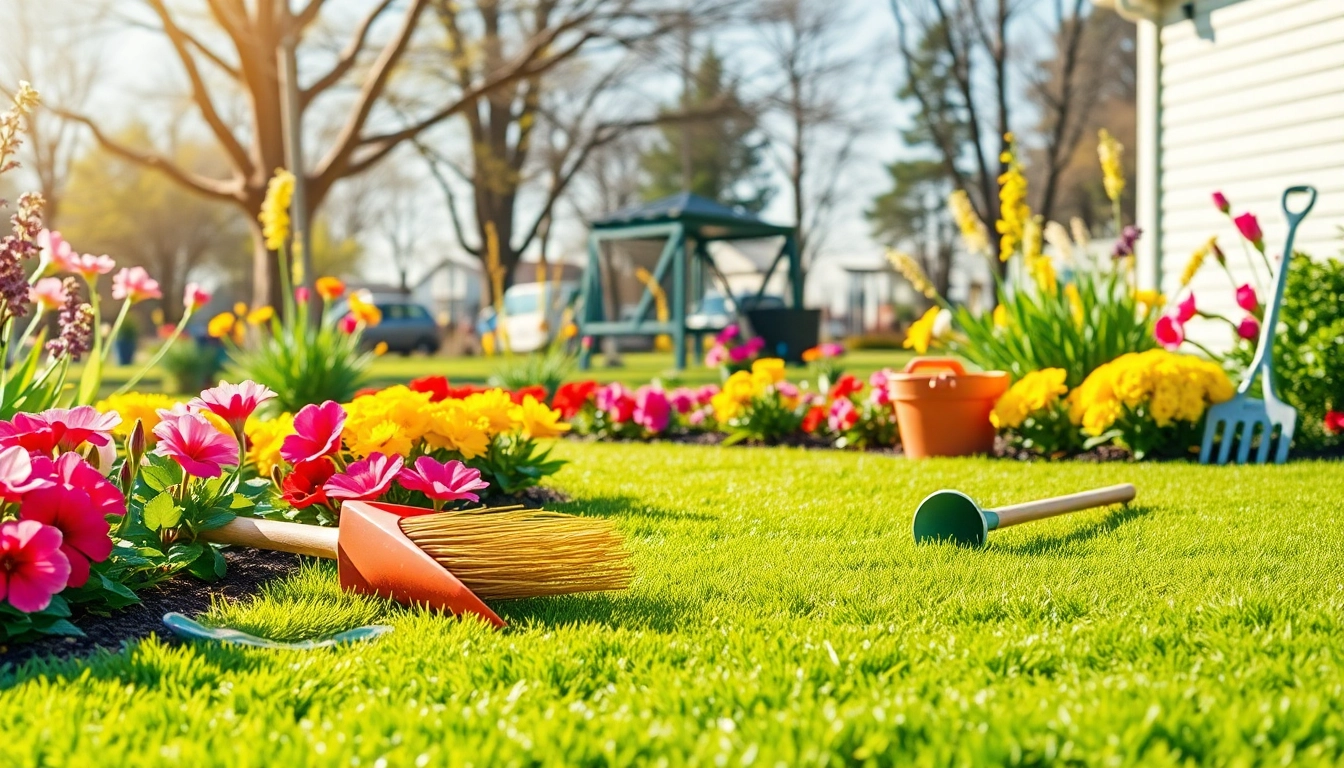Understanding the Importance of Spring Clean Up
As the snow melts and the first signs of life emerge from the ground, homeowners often find themselves faced with the task of spring clean up. This critical period serves as an essential foundation for a vibrant and healthy lawn and garden throughout the growing season. Not only does it set the stage for growth, but it also helps improve the aesthetic appeal of your property and promotes the overall health of your landscape.
Benefits of Seasonal Lawn Maintenance
Seasonal lawn maintenance, particularly spring clean up, encompasses various tasks aimed at rejuvenating and preserving your garden and yard. The advantages are numerous:
- Enhanced Curb Appeal: A well-maintained yard, free from debris, can significantly increase the overall attractiveness of your home.
- Improved Plant Health: Cleaning out old leaves, twigs, and other debris can reduce the risk of pests and diseases affecting your plants.
- Better Soil Quality: Managing your yard debris aids in the aesthetics of your soil and encourages proper drainage and nutrient absorption.
- Encourages Growth: Spring clean up helps in breaking any hardpan layers in the soil, making it easier for roots to penetrate and grow.
Common Debris to Remove for Effective Spring Clean Up
During the winter months, various debris tends to accumulate in gardens and lawns, hindering growth and development. Common items to remove include:
- Dead Leaves: A layer of leaves can smother grass and foster disease.
- Branches and Twigs: These can block sunlight and water from reaching the soil.
- Weeds: Winter allows certain weeds to seed and grow, making removal crucial during spring.
How Spring Clean Up Prepares Your Garden for Growth
Spring clean up not only culls undesirable elements but also reinforces beneficial practices that promote growth. By removing debris, you foster a healthier environment for new plantings, allowing sunlight and moisture to reach the soil more efficiently. Additionally, reintroducing nutrients through fertilization during clean up can boost plant vigor, resulting in lush foliage and flowers.
Essential Tools and Equipment for a Successful Spring Clean Up
The right tools ensure an effective spring clean up process. Below is a comprehensive list of essential tools that every gardener should have on hand:
Tools Every Gardener Needs for Spring Clean Up
- Rake: An essential tool for collecting leaves and debris.
- Shovel: Useful for turning over soil and removing larger debris.
- Pruning Shears: Necessary for trimming back perennials and shrubs that may have suffered winter damage.
- Lawn Mower: A well-timed mow rejuvenates grass, promoting healthier growth.
- Leaf Blower: An efficient way to clear leaves and smaller debris quickly.
Choosing the Right Equipment for Efficiency
Selecting the proper tools can streamline your clean-up efforts. Consider electric or gas-powered alternatives for larger properties, as they can save time and labor. Additionally, ergonomically designed tools can help prevent strain, ensuring you can work longer and more comfortably.
Maintenance Tips for Gardening Tools
Keeping your tools well-maintained will extend their life and improve performance:
- Clean your tools after each use to prevent rust.
- Sharpen blades regularly to maintain cutting efficiency.
- Store tools in a dry place to prevent decay or damage.
Step-by-Step Guide to Effective Spring Clean Up
Preparing for spring clean up involves a well-structured plan. Follow these steps to ensure an efficient clean up process:
Planning Your Spring Clean Up Schedule
Before diving into clean up, create a schedule:
- Assess Your Yard: Take inventory of what needs attention.
- Prioritize Tasks: Start with high-impact areas like flower beds and lawns.
- Allocate Time: Schedule clean up in manageable chunks to prevent fatigue.
Techniques for Removing Debris and Weeds
For a thorough clean up:
- Use a rake to gather leaves, or a leaf blower to speed up the process.
- Pull weeds by hand or use a weeder for stubborn roots.
- Dispose of yard waste responsibly, either through composting or municipal services.
How to Mulch and Fertilize After Clean Up
After debris removal, enrich your soil:
- Apply Fertilizer: Choose a balanced fertilizer to boost soil nutrients.
- Spread Mulch: A layer of mulch helps retain moisture, regulate soil temperature, and suppress weeds.
Cost Considerations for Professional vs. DIY Spring Clean Up
When deciding whether to handle yard care yourself or hire a professional service, consider these cost dynamics:
Average Costs for Professional Lawn Services
The pricing for lawn services can vary widely based on factors such as property size and service scope. Average costs may range from:
- $300 to $1,000 depending on the yard size and complexity.
Calculating the Cost of DIY Spring Clean Up
If opting for a DIY approach, account for costs associated with:
- Purchasing or renting tools.
- Buying fertilizers and mulch.
- Disposal costs for yard waste.
Budgeting Tips for Lawn Care
To manage costs effectively:
- Create a yearly budget that includes anticipated expenses for gardening tools and maintenance products.
- Track actual spending to adjust future budgets.
- Consider seasonal discounts and bulk purchasing for supplies to reduce costs.
Maintaining a Healthy Lawn After Spring Clean Up
Following your spring clean up, ongoing maintenance is vital to ensure your lawn remains healthy and vibrant. Here’s how to cultivate a flourishing landscape:
Daily and Weekly Maintenance Tips
Regular care helps in sustaining the benefits of spring clean up:
- Water deeply but infrequently to encourage deep root growth.
- Check for pests and diseases regularly for early intervention.
- Perform routine mowing and edging to keep your lawn looking sharp.
Long-Term Lawn Care Strategies
Implement long-term strategies to ensure a thriving lawn:
- Rotate fertilizers: Consider organic options, like compost, for nutrient cycling.
- Seasonally overseed: This helps fill in bare spots and maintain a lush lawn.
Signs Your Lawn Is Thriving Post-Clean Up
Recognizing the indicators of a healthy lawn can encourage continued investment in care:
- Vibrant green hues indicate healthy grass.
- Robust growth and minimal weed presence suggest effective management.
- Strong root development as seen through thorough inspections.



